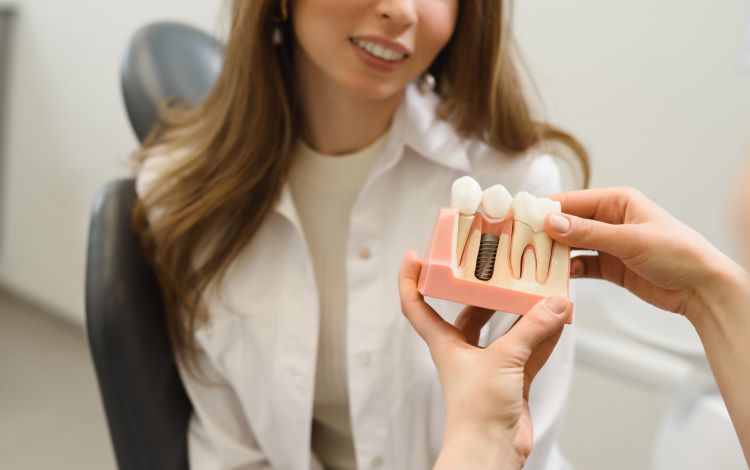Why Are US Seniors Choosing Screwless Dental Implants for Faster Healing in 2025?
Recent dental implant advances are making tooth replacement less invasive and speeding recovery for many US seniors. This article explains why screwless dental implants are increasingly chosen — how they may reduce discomfort, simplify treatment, and support faster healing for older adults.

What are screwless dental implants and how do they differ from traditional implants?
Screwless dental implants are a type of implant designed to be placed without the threaded screw used in many traditional systems. They typically use a smooth, tapered or press-fit shape and are made from biocompatible materials such as titanium or zirconia. Like conventional implants, they rely on osseointegration (bone growing onto the implant surface) to achieve stability.
Key points: - They may require different bone preparation than threaded implants and can reduce the need for extensive threading in some cases. - They can cause less mechanical stress on surrounding bone in selected situations. - Clinical protocols vary by manufacturer and clinician, so techniques and indications are not uniform.
Why is reduced invasiveness important for seniors?
Older adults often have lower bone density and slower healing, and many take medications or have conditions that affect recovery. Less invasive implant techniques may reduce surgical trauma and postoperative discomfort in appropriate cases.
However: - “Less invasive” does not mean risk-free; patient health, bone quality, and surgical skill are critical. - Some seniors still require preparatory procedures (e.g., bone grafting) depending on anatomy.
Immediate or early loading: what to expect
Some screwless implant systems are designed to permit immediate or early placement of a provisional crown when sufficient primary stability is achieved. In practice: - Immediate or same-day restoration may be possible for selected patients and implant sites. - It is not universally applicable; many cases still require a healing period before final restoration. - The decision depends on primary stability, bone quality, occlusion, and clinician judgment.
Avoid assuming immediate loading is common for all patients.
Osseointegration and stability
Screwless implants, like threaded implants, depend on osseointegration for long-term stability. Surface treatments and design features may promote bone attachment.
Caveats: - Short- and mid-term studies for some screwless designs report good outcomes, but long-term comparative evidence is limited. - Success depends on patient health, surgical technique, and follow-up care.
Postoperative comfort and recovery
Some patients report less swelling, pain, or downtime after less invasive implant procedures, which can be valuable for seniors. Nevertheless: - Reports are variable and influenced by individual factors. - Proper pain management, infection control, and follow-up remain essential.
Procedure time and number of visits
Screwless implant placement may be quicker in certain protocols, and some workflows aim to reduce visits (especially when immediate restoration is appropriate). Still: - Not all practices use identical protocols; treatment time and number of visits depend on case complexity and clinician preference. - For seniors with mobility or transport challenges, minimizing visits can be helpful, but realistic expectations should be set.
Maintenance and longevity
With appropriate oral hygiene and routine dental care, many implant restorations can last many years. For screwless implants: - Early reports suggest promising outcomes for some systems, but long-term, high-quality comparative data are limited. - Regular check-ups, hygiene, and avoiding damaging habits (e.g., clenching, hard foods) are important.
Suitability for seniors with common health concerns
Screwless implants may be an option for some older adults, including those with conditions that affect healing. Still: - Each patient requires individual assessment of systemic health (e.g., diabetes control), medications (anticoagulants, bisphosphonates), bone quality, and oral hygiene. - Uncontrolled systemic disease, heavy smoking, or insufficient bone volume may contraindicate implant placement or require additional procedures.
Broader context in 2025
In 2025, demographic shifts and technological advances (digital imaging, improved implant surfaces, and minimally invasive techniques) are influencing implant care for seniors. Clinicians are increasingly tailoring choices to patient needs, balancing potential benefits with evidence and individual risk factors.
Conclusion: what seniors should know
Screwless dental implants may offer advantages for some seniors — including potentially reduced surgical trauma, fewer visits in selected cases, and quicker provisional restoration when appropriate. However, claims about universal immediate loading or universally comparable long-term success are not established for all systems. Seniors should discuss options with a qualified dental professional, review evidence for specific implant systems, and obtain a personalized treatment plan that considers medical history, bone health, and realistic outcomes.
Sources
Disclaimer: Prices, financing options, and availability of dental implants and related procedures can vary widely based on location, dental provider, and patient-specific factors. It is recommended that readers verify such details with local dental professionals.




